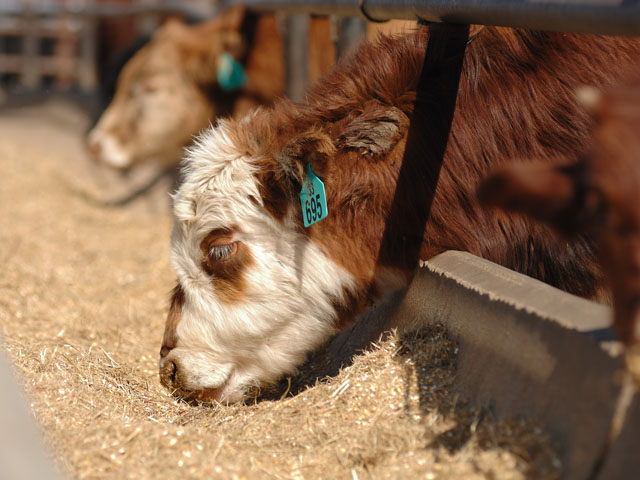Reaction to New Cattle Reports
Will New USDA Market Reports Help Cow-Calf Producers Make More Money?
USDA heralded two new price reports for the cattle industry last week, aimed at promoting "fair and competitive markets." What does it all mean for cow-calf producers? The answer, as usual, depends on whom you ask.
In summary, report No. 1, the National Daily Direct Formula Base Cattle report, will provide additional information that goes into foundational pricing used to create cattle market formulas, grids and contracts. Report No. 2, the National Weekly Cattle Net Price Distribution, will show volume of cattle purchased at each level of pricing within the formulas, grids and contracts addressed in the first report. This second report is described by USDA as "a window into what producers are paid for cattle (net) and retains confidentiality by segregating volumes purchased in $2 increments plus/minus the daily weighted average price depending upon premiums and discounts."
U.S. Secretary of Agriculture Tom Vilsack, on announcing the reports, said in a news release that current negotiated cash cattle trade is about 30% less than in 2005, and formula transactions are up about that same amount. He noted that in the coming months, producer-focused outreach sessions would be held to help everyone understand how the new reports could be used to inform marketing decisions from the farm to the feedlot.
Cattle producer organizations, including the National Cattlemen's Association (NCBA), the U.S. Cattlemen's Association (USCA) and R-CALF have all commented publicly on the new reports.
The NCBA's Ethan Lane, vice president of government affairs, told DTN's Chris Clayton the new reports mark a "step toward increasing transparency." Brooke Miller, president of USCA, said in the same article that the new reports will help meet efforts to promote competition.
R-CALF's Bill Bullard, however, took a less generous view of the reports, calling the efforts at transparency "inadequate." He said in a news release that "While the new reports will assist cattle producers in analyzing prices being paid in the marketplace, they will not correct the lack of competition plaguing the entire live cattle industry."
P[L1] D[0x0] M[300x250] OOP[F] ADUNIT[] T[]
What do market analysts think about the reports? DTN asked well-known cattle market veteran Derrell Peel to share his reaction to the news.
Peel, an Extension specialist in livestock marketing for Oklahoma State University, said there are a lot of dimensions to the reports, and it is truly too early to know exactly what they will or won't tell those in the industry.
"As a market analyst and researcher, I am always in favor of more information over less. In that sense, this is a good thing. Mandatory price reporting is a way to get that information we want to see but with the limitation imposed by confidentiality and other things. I don't expect, however, to see any immediate impacts from these new reports."
Peel explained it will take time for producers and analysts to figure out what the reports are really telling the industry and how best to use the information.
"I doubt we will see any major changes in the way the fed cattle markets work as a result of this," he said. "There have been a lot of concerns over price discovery, and I've said before that I honestly don't believe there is a persistent price discovery problem. So, bottom line, I don't expect any massive or immediate impact in the market as a result of these new reports."
Peel added that cow-calf producers specifically would likely find little value in the information unless they were primarily producing steer calves and retaining ownership into the feedlots.
"At its best, it's possible some individual producers in different locations and markets may be able to use the reports to get additional information to help them make marketing decisions or negotiate. The real value is likely to be for those retaining ownership through the feedlot and then selling fed cattle."
Asked if these reports will be able to quell the sense that there is a total lack of transparency in cattle markets, Peel notes the industry has been here before.
"In the 1990s, we were in a similar place, where producers were frustrated and expressing anger over market disruptions. Mandatory reporting started in 2001 in response to that. There was this feeling then that there were holes of information and that if we could see them, it would reveal a lot. As analysts, we loved the additional data, but we never found those big pots of gold some thought were hiding in those data holes. I don't see any big pots of gold this time either."
DTN Ag Policy Editor Chris Clayton provided a detailed explanation of what data would be included in the new USDA reports in an article last week, "USDA Reporting Cattle Sold on Formulas": https://www.dtnpf.com/….
Victoria Myers can be reached at vicki.myers@dtn.com
Follow her on Twitter @myersPF
(c) Copyright 2021 DTN, LLC. All rights reserved.





